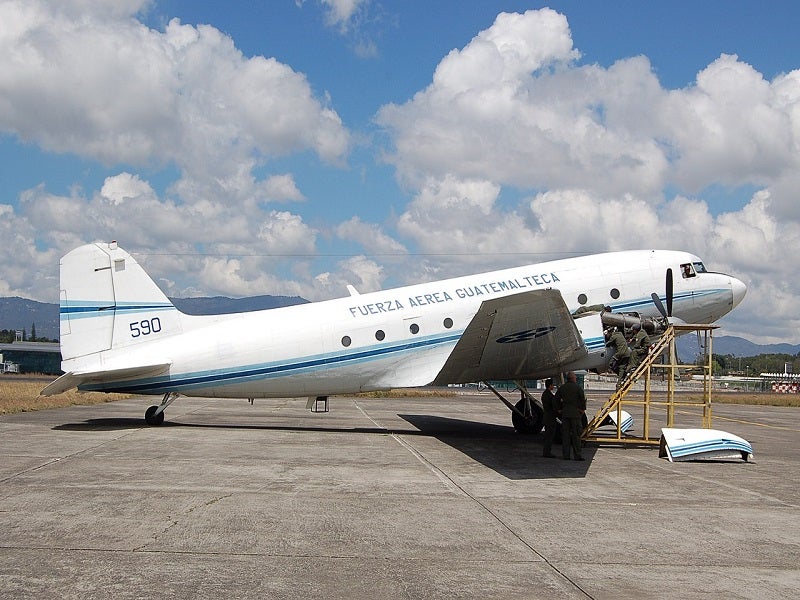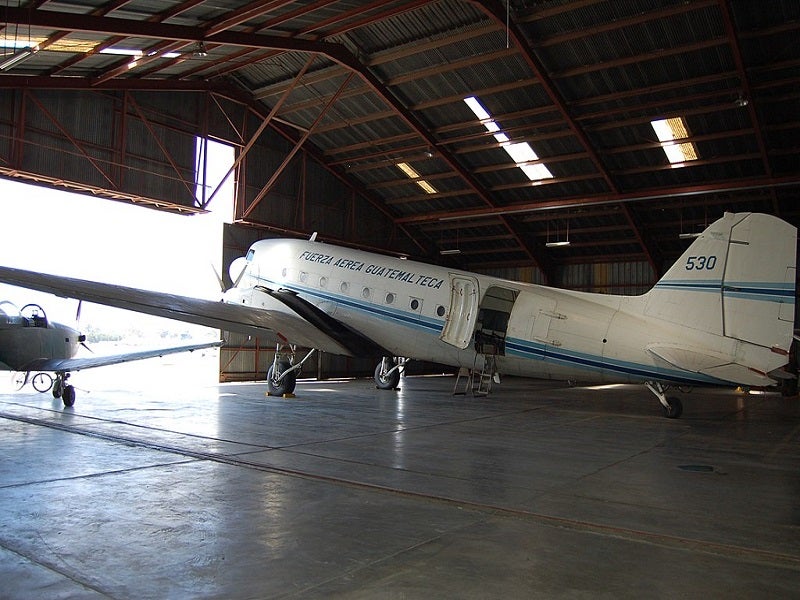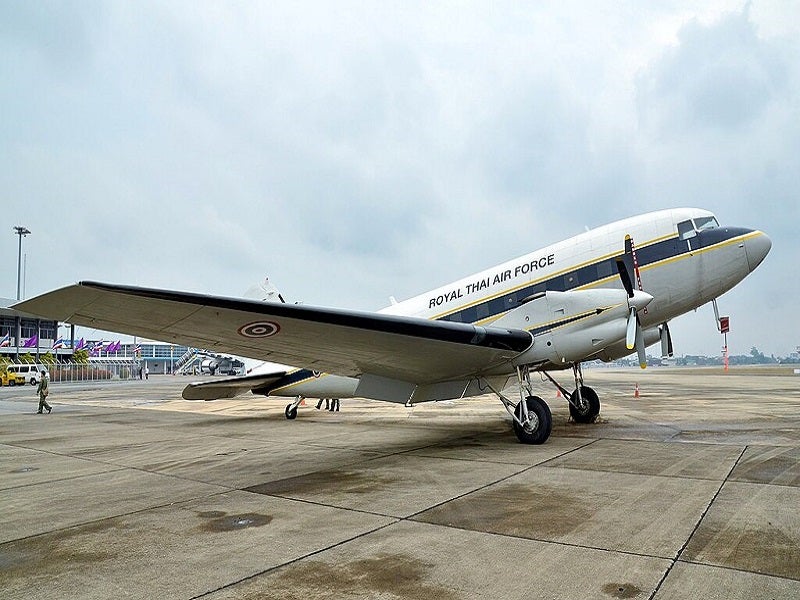The Basler BT-67 is a utility aircraft manufactured by Basler Turbo Conversions, an aircraft manufacturer based in the US.
The aircraft made its debut in January 1990 and is currently utilised by various air forces for different purposes.
The Mauritania Air Force employs it for logistical support, and intelligence, surveillance and reconnaissance (ISR) tasks while the Colombian Air Force uses it as a gunship for counterinsurgency operations.
The Mali, El Salvadoran, and Guatemalan Air Forces utilise the BT-67 for personnel and cargo transport, while the Royal Thai Air Force primarily employs it for firebombing and cloud seeding operations.
In April 2024, the US State Department approved a foreign military sale to Argentina amounting to an estimated $143m for Basler BT-67 aircraft and associated logistics and support services.
Basler BT-67 utility aircraft design and features
The Basler BT-67 is a modernised version of the Douglas DC-3, equipped with turboprop engines. It underwent a comprehensive overhaul, including aerodynamic enhancements, structural modifications for improved strength and performance, and the integration of new systems to enhance reliability.
The BT-67 is 42.2ft long, 7ft wide and 6.6ft high, with a total volume of 1,225ft³.
It boasts a maximum range of 2,000nmi, a maximum altitude of 25,000ft, and a maximum endurance of up to ten hours.
The aircraft can handle a gross take-off weight of 30,000lb.
Its fire detection and extinguisher systems include dual sensing, three-element, and four-bottle systems. The flight controls feature servo-assisted ailerons.
Optional features of the Basler BT-67
The aircraft can be equipped with optional features such as long-range fuel tanks with dumps, autopilot, high utility lightweight floor, upper cargo door, side-facing seats, combination seating, and air conditioning.
Other options include terrain awareness and warning system (TAWS) A, traffic collision avoidance device (TCAD) I and II, TCAS I and II, cockpit voice recorder (CVR), and digital flight data recorder (FDR).
Special mission options available for the aircraft include mission consoles, forward-looking infrared (FLIR), and worldwide communications (high frequency (HF)/satellite communications (SATCOM)).
Some other special mission options comprise side-facing fold-up seats with pallet rollers, retractable skis, electronic countermeasure (ECM), night vision goggles (NVG)-compatible cockpit, gunship platform, cockpit armour, and wing hard points.
Propulsion of the Basler BT-67
The Basler BT-67 is powered by Pratt & Whitney PT6A-67R engines, featuring epoxy-impregnated, carbon fibre-reinforced cowlings and nacelles and a control quadrant.
The PT6A boasts a dual-shaft design, featuring a multi-stage compressor propelled by a single-stage compressor turbine. An autonomous shaft connects the power turbine to the propeller via an epicyclic concentric reduction gearbox.
The Basler BT-67 is equipped with a Hartzell 5-blade metal propeller, a spinner, and de-ice boots.
It also features a comprehensive bus system encompassing left and right generators, essential and emergency busses, along with 300A starter generators (with an optional upgrade to 400A).
The aircraft fuel system includes electrically driven fuel pumps and transfer pumps, complete cross-feed capability, leak-proof filler caps, fuel quantity transmitters, indicators with a fuel computer, and a flow indication system.
Cockpit and avionics of the BT-67
The BT-67’s cockpit features overhead system panels, circuit breakers, an electrical junction box, and an instrument panel.
Customisable avionics packages are available for Basler BT-67 to meet the requirements of different customers.
The Genesys avionics package comprises dual NAT AMS43 audio panels, remote GPS/SBAS receivers, digital Nav/Comm/Marker Beacon radios, along with a Garmin TCAS II/transponder and the ArchAngel attitude and heading reference system (ADAHRS).
It also features a Genesys AP-5000R three-axis autopilot with electric trim.
Furthermore, the package features Canyon Aerospace CDM-451 distance measuring equipment (DME), Bendix/King KRA-405B radar altimeter, Mid-Continent SAM-302 standby attitude module, Honeywell RDR-2100 weather radar, and three Genesys IDU-680P displays.
The aircraft’s Sandel avionics package includes two NAT AMS43 audio panels, two Garmin GTN 750Xi Nav/Comm/GPS units with TAWS A/B capability, and one Garmin GTS8000 TCAS II system with two Garmin GTX3000 transponders equipped with ADS-B Out.
It also includes two Honeywell IVA-81D displays, along with one Garmin GWX-75 weather radar, two ArchAngel ADAHRS units, and two Sandel SN3500 EHSI displays.
In addition, the package includes the Bendix/King KN-63 DME with KDI-572, the Bendix/King KRA-405B radar altimeter with KNI-415, the Mid-Continent SAM-302 standby attitude module, the Genesys AP5000 three-axis autopilot with electric trim, the Sandel SA4550 pilot attitude indicator with flight director, and the PS Engineering MB10 remote marker beacon.






